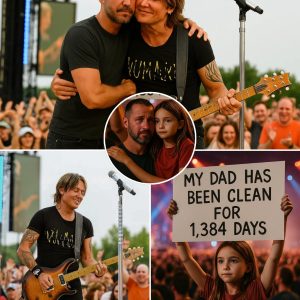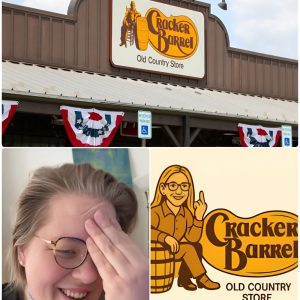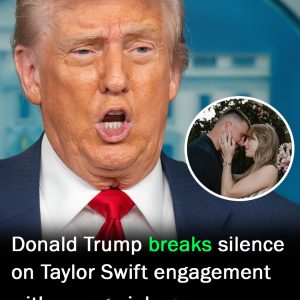VATICAN CITY (AP) — Cardinal Robert Prevost, an American missionary who spent his career ministering in Peru and leads the Vatican’s powerful office of bishops, was elected the first American pope in the 2,000-year history of the Catholic Church. Prevost, 69, took the name Leo XIV.
White smoke poured out of the Sistine Chapel chimney Thursday at 6:07 p.m. local time, signaling that a pontiff had been elected to lead the Catholic Church.
Here is the latest:
Pope Leo XIV’s first message: Peace and dialogue ‘without fear’
In his first words, Pope Leo XIV, history’s first American pope Robert Prevost, said “Peace be with you.”
From the loggia of St. Peter’s Basilica, he recalled that he was an Augustinian priest, but a Christian above all, and a bishop, “so we can all walk together.”
He spoke in Italian and then switched to Spanish, recalling his many years spent as a missionary and then archbishop of Chiclayo, Peru.
Catholic cardinals returned to the Sistine Chapel on Thursday for a second day of voting to try and elect a new pope.
The 133 cardinals voted again in the morning after spending the night sequestered at the Vatican residences. On Wednesday evening, black smoke poured out of the Sistine Chapel chimney indicating no pope was elected on the first ballot of the conclave.
The cardinals have been sworn to secrecy in the centuries-old ritual to elect a new leader of the 1.4 billion-member Catholic Church. To become pope, a cardinal needs a two-thirds majority, or 89 votes. This conclave is the most geographically diverse conclave in the faith’s 2,000-year history.
The voting cardinals look over the crowd
The voting cardinals now fill the four balconies that flank the flag-draped balcony where Pope Leo XIV will speak. Many — including several who had been identified as possible contenders — seem joyful as they look over the crowd below.
Robert Prevost is elected the first American pope in history
Cardinal Robert Prevost, an American missionary who spent his career ministering in Peru and leads the Vatican’s powerful office of bishops, was elected the first American pope in the 2,000-year history of the Catholic Church.
Prevost, 69, took the name Leo XIV.
A new pope’s last moments before emerging to a global role
The new pope, whoever he is, should now be donning his papal vestments in the so-called “Room of Tears.” It is thus named due to the emotional weight of the moment and the responsibility ahead.
People in the crowd continue to scream “Viva il papa!” as they remain suspended in time in huge anticipation.
One cardinal’s hometown ‘mystery’
Three friends in Cardinal Pietro Parolin’s hometown of Schiavon clinked their glasses in an Italian salute when the white smoke went up in St. Peter’s Square. “We hope it’s him,” said Mariano Vialetto, over an aperitivo in Caffè Centrale. “We have our fingers crossed.”
Morgan Zaetta was more sure: “It’s him, it’s him.”
Then the bells rang in the church, St. Margherita — only the sacristan says it wasn’t he who rang them and doesn’t know who did.
“It wasn’t me,” said Angelo Cisotto, adding no one was in the bell tower and they could not be rung by remote.
“It’s a mystery,” he said. Asked if it could be a sign: “We hope, we hope.’’
A last quiet moment before the excitement
A few minutes before the white smoke, a small seagull chick appeared near the chimney of the Sistine Chapel. Alongside the chick were two larger seagulls, almost as if they were a family. Just as the mother was feeding the chick, the chimney began to smoke.
Older cardinals who didn’t participate in the conclave rush out to the square
These cardinals lined up as military bands played the Italian and Holy See national anthems.
Spotted in the crowd were American Cardinals Sean O’Malley and Donald Wuerl, both of whom are over 80 and didn’t vote.
Swiss Guards have taken position in front of front of St. Peter’s Basilica
A marching brass band in blue uniforms led a contingent of Swiss guards through the crowd to a central spot below the balcony, generating another huge roar from the crowd.
The Pontifical Swiss Guard is the official security force of the Vatican, and holds a ceremonial and a protective function.
And now more marching bands are celebrating the election of a new pope in a parade that includes large groups in military dress uniforms.
“Vivi il Papa!” erupts from the crowd whenever the music pauses.
All eyes are now on the red-draped central balcony of St. Peter’s Basilica
That’s where a cardinal will soon emerge to “to proclaim a new pope to Rome and to the world.”
There is incredible excitement — the crowd is roaring, and some are shouting “hallelujah!”
Church bells ring in Spain
Moments after white smoke poured out of the Sistine Chapel, the bells began tolling in Barcelona’s towering Sagrada Familia basilica and the Almudena Cathedral in Madrid, across from the royal palace.
The great bells of St. Peter’s Basilica are tolling
And down below, amid the cheers in the vast mix of humanity in St. Peter’s square, priests are making the sign of the cross and nuns are weeping at the white smoke wafting into the sky.
The crowd erupted with joy in St. Peter’s Square
Some are obviously deeply moved, others excited. They’re clapping and waving national flags and taking photos with their phones.
“Viva il papa!” some shouted.
White smoke is pouring out of the Sistine Chapel chimney
It signals that a pope has been elected to lead the Catholic Church.
That means the winner secured at least 89 votes of the 133 cardinals participating in the conclave to elect a successor to Pope Francis.
The crowd in St. Peter’s Square erupted in cheers.
The name will be announced later, when a top cardinal utters the words “Habemus papam!” Latin for “We have a pope!” from the loggia of St. Peter’s Basilica. The cardinal then reads the winner’s birth name in Latin, and reveals the name he has chosen to be called.
The new pope is then expected to make his first public appearance and impart a blessing from the same loggia.
The smoke emerged from the chimney at 6:07 p.m.
Pope Francis appointed 108 of the cardinals voting for his successor
He elevated these men and others who are not eligible to vote in groups throughout his papacy, beginning in January 2014 with 19. They came from around the world, including the developing nations of Haiti and Burkina Faso, in line with his belief the church must pay more attention to the poor and that its hierarchy should reflect the face of the faithful.
His last batch was installed in December 2024 with 21 cardinals, 20 of whom are in the conclave.
The excitement in the square is contagious
At one point there was applause from the crowd as thousands train their eyes on the chimney above the Sistine Chapel, but it was a false alarm.
“We want a Pope close to the people and close to us, to the youth, who represent the future of the Church, said Kacper Michalak, 20, a seminarian from Poland who came for the 2025 Jubilee. The holy year is an ancient church tradition encouraging spiritual renewal which encourages pilgrimages to Rome.
How long does it take to choose a pope?
It’s hard to say precisely. The Vatican doesn’t officially publish the number of votes in past conclaves, and sources compiling their own tallies don’t completely agree. But historical data provide a few clues.
The longest conclave since the 20th century began took 14 rounds of balloting across five days, ending with the election of Pius XI in 1922. The shortest, electing Pius XII in 1939, took three ballots over two days.
Cardinals must reach a two-thirds majority to elect a pope. That may have been easier in the past: In 1922 there were just 53 voting cardinals, and until 1978 conclaves had fewer than 100. This year there are 133, so 89 votes are needed.
The faithful in the piazza don’t get a vote. But if they did …
Pedro Deget, 22, a finance student from Argentina, is hoping for a new pope in Francis’ image. “Francis did well in opening the church to the outside world, but on other fronts maybe he didn’t do enough. We’ll see if the next one will be able to do more.”
The Rev. Jan Dominik Bogataj, a Slovene Franciscan friar, was more critical of Francis. He said if he were in the Sistine Chapel, he’d be voting for Cardinal Pierbattista Pizzaballa, the Latin Patriarch of Jerusalem who is on many papal contender lists.
“He has clear ideas, not much ideology. He’s a direct, intelligent, and respectful man,” Bogataj said from the square. “Most of all, he’s agile.”
A hot mic moment feeds conjecture over papal candidates
As the Sistine Chapel’s doors slammed shut to seal the cardinals off from the outside world, leadership of the proceedings was assumed by Cardinal Pietro Parolin, the 70-year-old secretary of state under Francis and a leading contender to succeed him as pope.
Parolin is the most senior cardinal under age 80 eligible to participate, and seemed to have received blessings from none other than Cardinal Giovanni Battista Re, the 91-year-old dean of the College of Cardinals, who was caught on a hot mic during Wednesday’s pre-conclave Mass telling Parolin “Auguri doppio” or “double best wishes.”
Italians are debating whether this was a customary gesture, an informal endorsement or even a premature congratulations.
Prominent cardinal hopes for white smoke by the evening
Cardinal Giovanni Battista Re, the dean of the College of Cardinals, expressed hope that a new pope would be elected within hours, according to reports in major Italian newspapers.
“I hope that when I return to Rome this evening, I’ll find the white smoke already rising,” he said, speaking from the city of Pompei on Thursday.
Re is 91 years old, which makes him too old to participate in the conclave of 133 cardinals who are electing the next pope and who all have to be under 80.
However, he has been prominent and delivered a Mass on Wednesday before the cardinals began their conclave. As the Mass ended he was caught on a hot mic saying to Cardinal Pietro Parolin, viewed as a favorite for the papacy: “auguri doppi” (“double best wishes”).
Italians discussed whether this was a customary gesture acknowledging Parolin’s role as the most senior cardinal present in the conclave, or if it might have been an informal endorsement of Parolin’s candidacy for the papacy.
Day 2 of waiting for a new pope
Many faithful are hoping that the second day of the conclave will give the church and the world a new pope after a first vote produced dark smoke on Wednesday evening, sending a disappointed crowd to disperse in all directions in Rome.
Earlier, some of the people had started thinking that the long wait was the sign cardinals had reached a decision in a first vote, which would be unprecedented in the modern era.
“They probably need more time,” said Costanza Ranaldi, a 63-year-old who travelled from Pescara in Italy’s Abruzzo region to be present at the historic moment.
Chiara Pironi, a 26-year-old who lives in Rome, said she would keep returning to St. Peter’s Square until a new pope is chosen.
“I don’t want to miss that moment,” she said.
A proverb and a warning
There is an old prover that Italians keep repeating: “He who enters the conclave as pope leaves as a cardinal.”
The saying warns against overconfidence among frontrunners in papal elections — those widely expected to win often do not.
In Rome, the phrase is heard frequently, from casual conversations to live TV broadcasts, where commentators use it to temper speculation.
It’s a reminder of the secrecy and unpredictability of the conclave, where decisions are made behind locked doors, and outcomes can surprise even seasoned Vatican watchers.
Who is voting in the conclave?
Of the 133 cardinals voting in the conclave, 108 were appointed by Pope Francis, who died last month at the age of 88.
The electors could feel loyalty to continue his legacy — even though the late pontiff didn’t choose cardinals based on ideology, but rather for their pastoral priorities and geographical diversity.
Beyond that, the cardinals will consider practical matters, like age. Piking a relatively young man — say in his 60s — could result in a papacy of 20 years or longer.
Also, choosing a pope from where the church is growing — Asia or Africa — could bring more upheaval to the Vatican’s Italian-heavy bureaucracy that is still smarting from the Argentine pope’s go-it-alone style.
Black smoke pours from Sistine Chapel chimney, indicating conclave hasn’t elected pope
The smoke billowed out at 9 p.m. Wednesday, some four hours after 133 cardinals solemnly entered the Sistine Chapel, took their oaths of secrecy and formally opened the centuries-old ritual to elect a successor to Pope Francis to lead the 1.4 billion-member church.
With no one securing the necessary two-thirds majority, or 89 votes, the cardinals retired for the night to the Vatican residences where they are being sequestered.





